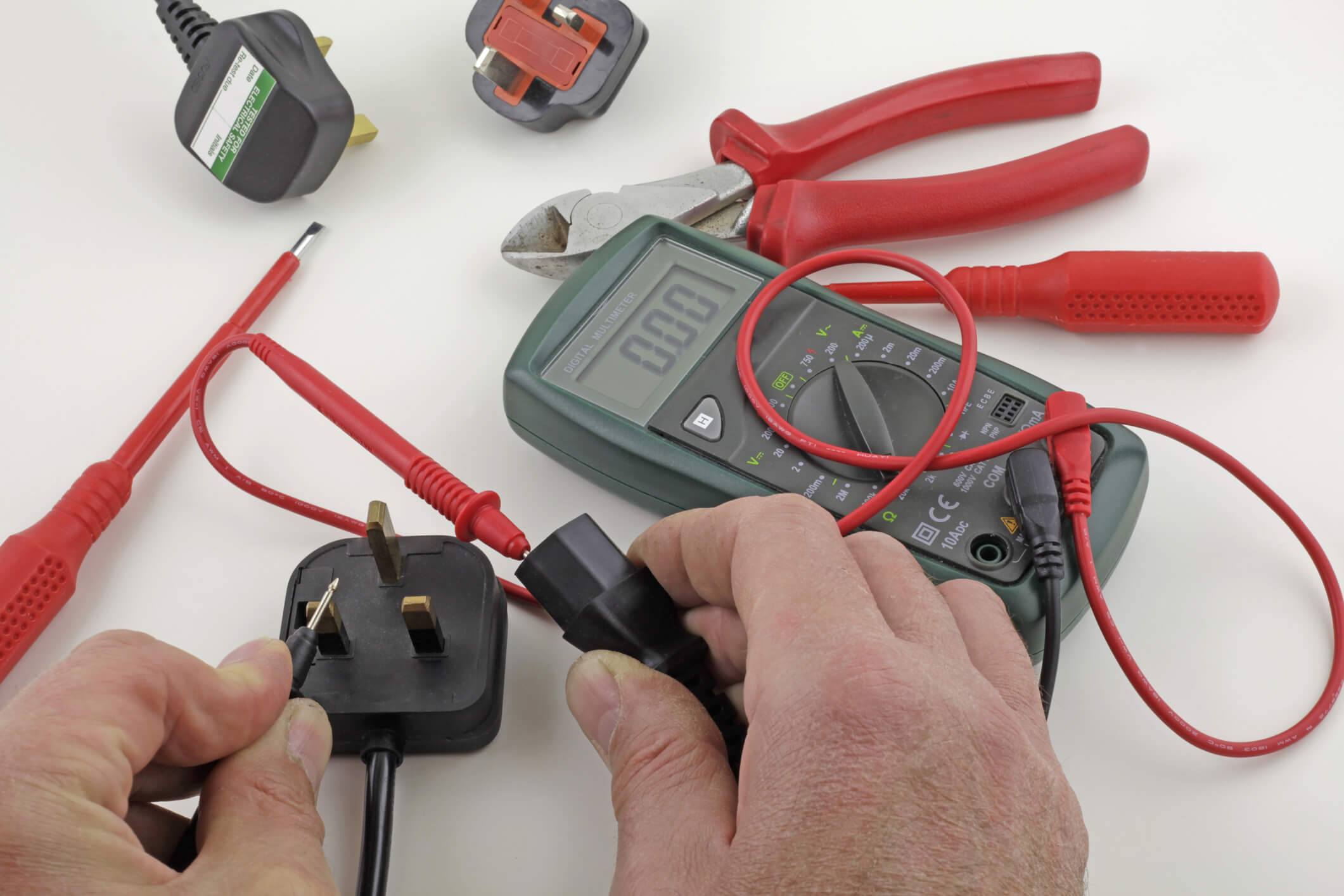20+ Years Experience
Specialist PAT Testing

Did you know that faulty electrical equipment is the most common cause of workplace fires and that these fires can result in serious injuries, financial loss, and even loss of life?
If you want to keep your workplace safe and avoid these risks, you need to understand how PAT testing works.
PAT testing, also known as Portable Appliance Testing, is a crucial process that guarantees the safety of electrical equipment by inspecting for any faults or defects. This testing is essential in maintaining a safe environment and preventing accidents caused by faulty appliances.
Skilled technicians conduct visual and electrical tests on appliances to identify any potential hazards. By promptly identifying and addressing electrical safety defects, PAT testing helps to safeguard individuals from the risks associated with faulty equipment.
Regularly performing PAT testing is vital in ensuring the safety and dependability of electrical equipment in a variety of settings, including homes, offices, and public spaces.
PAT testing is an essential process that helps prevent accidents and fires caused by faulty equipment. By inspecting and testing electrical appliances, PAT testing identifies potential fire hazards and ensures their safe operation. Faulty equipment can lead to electrical faults, short circuits, and overheating, which can result in fires.
PAT testing includes checks on plugs, cables, and appliances, ensuring they are in good working condition and conform to safety standards.
Fire detectors are also inspected to ensure they are functional. Regular PAT testing is crucial for maintaining a safe environment and preventing accidents and fires, including those caused by faulty fire detectors.
Ensuring the safety of electrical appliances through PAT testing is crucial for businesses to avoid legal consequences. According to the Health and Safety Executive (HSE) in the UK, employers have a legal obligation to protect employees and the public from electrical hazards.
PAT testing helps identify faulty equipment, reduce the risk of accidents, and demonstrate compliance with these regulations.
Regular PAT testing is essential for businesses to maintain a safe working environment, protect their employees, and avoid potential legal penalties.
Pro-tip: Schedule regular PAT testing to stay compliant and prioritise the safety of your workplace.
PAT testing is essential for improving efficiency and productivity by guaranteeing the safety and reliability of electrical equipment. The following are the steps involved in the PAT testing process:
By following these steps and implementing PAT testing into an Electrical Maintenance Regime, businesses can ensure the safe and efficient use of their electrical equipment, reducing the risk of accidents and downtime.
When determining the frequency of Portable Appliance Testing (PAT), it is crucial to assess the level of risk in the environment. For low-risk office spaces or environments, a longer testing interval can be considered. However, it is important to keep in mind that regular visual inspections should still be conducted.
Here are the steps to determine the testing frequency:
Even in low-risk environments, it is advisable to perform regular visual inspections to identify any potential issues or hazards.
Frequency of Portable Appliance Testing (PAT) depends on industry standards and legal obligations set by the Health and Safety Executive. The guidelines recommend that higher-risk environments, like construction sites and factories, have more frequent testing.
For example, equipment in construction sites should be tested every three months, while office equipment may be tested every year. It is important to consult the specific regulations for each industry to ensure compliance with legal obligations.
Remember, regular PAT testing is crucial for maintaining safety standards and reducing the risk of accidents. Stay proactive in ensuring the safety of your workplace.
The frequency of Portable Appliance Testing (PAT) varies depending on the type of appliance. Class 1 appliances, such as desktop computers, should be tested every four years. Extension leads, on the other hand, should be tested every year to ensure their safety and reduce the risk of electrical accidents.
Regular testing is crucial in identifying any faults or defects that may have developed over time, allowing for prompt repairs or replacements. By following the recommended testing frequencies, you can maintain a secure working environment and safeguard both employees and equipment.
PAT testing, or Portable Appliance Testing, is a process that involves checking electrical equipment for any potential hazards or defects. By complying with PAT testing regulations, equipment owners can ensure that their appliances are safe for use, thus creating a low-risk environment for everyday activities.
The Health and Safety at Work Act of 1974 and the Electricity at Work Regulations of 1989 both emphasize the importance of creating a healthy and safe environment in the workplace. PAT testing is one way to achieve this goal, as it helps ensure the safety of electrical equipment.
There are three types of electrical appliances tested during PAT: Class 1, Class 2, and Class 3. These classes range from most to least dangerous, with Class 1 being the most high-risk and Class 3 being the least.
Class 1 appliances rely on earth protection and must undergo a full PAT insulation test and earth continuity test to ensure safety.
On the other hand, Class 2 appliances do not rely on earth protection and have double insulation, making them generally safer and requiring only a PAT insulation test.
Users can prepare for PAT testing by scheduling a session with qualified PAT testers, communicating any problems or concerns with the equipment, making an inventory of all electrical appliances, and visually examining the equipment for physical defects. These steps help ensure a smooth and thorough PAT testing process.
We Aim To Reply To All Enquiries With-in 24-Hours